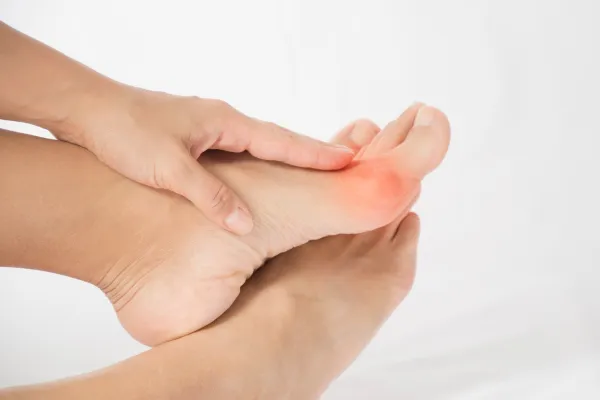
Foot Pain That Won’t Go Away? You Might Have a Stress Fracture
That dull ache in your foot? The one that gets worse when you walk, but doesn’t fully go away with rest? It might be more than just a tired foot.
If you’re dealing with persistent foot pain, especially after increased activity, you could have a stress fracture—a small crack in the bone caused by overuse. And unlike a full break, it can sneak up on you without any dramatic moment of injury.
At Pomona Valley Podiatry, we see this all the time—especially in runners, walkers, athletes, and even folks who’ve recently started a new workout routine or job that keeps them on their feet.
What Is a Stress Fracture, Exactly?
A stress fracture is a tiny crack or severe bruising within a bone. It often happens in weight-bearing bones like those in your foot or lower leg. The most common spots for stress fractures in the foot are:
The metatarsals (bones near the middle and front of your foot)
The heel (calcaneus)
The navicular bone (on the top inside of your midfoot)
Stress fractures are usually caused by repeated stress—not one big trauma like dropping something heavy on your foot. It’s the “too much, too soon” type of injury.
What Does a Stress Fracture Feel Like?
The symptoms can be subtle at first, which is why many people ignore them. Here’s what to watch for:
A deep, aching pain that gets worse with activity and eases with rest
Swelling on the top of the foot or around the ankle
Tenderness to the touch in one specific spot
Pain that worsens over time, especially if untreated
If it feels like your foot pain has a “hot spot” or keeps coming back in the same area—don’t wait. It’s better to get it checked than risk making it worse.
Who's at Risk for a Stress Fracture?
While anyone can get one, you’re more at risk if you:
Recently increased your walking, running, or workout routine
Stand or walk all day for work
Wear unsupportive shoes (especially worn-out sneakers or flat soles)
Have osteoporosis or low bone density
Are a runner, dancer, or play high-impact sports
Have a history of foot pain or overuse injuries
How Are Stress Fractures Diagnosed and Treated?
At Pomona Valley Podiatry, we’ll do a careful exam and may order imaging (like an X-ray, or if needed, an MRI or bone scan). These help us see even tiny cracks that don’t show up on early X-rays.
If we confirm it’s a stress fracture, don’t worry—you usually don’t need surgery. Most cases heal well with:
Rest and activity modification (no running or impact for a few weeks)
Protective footwear or a walking boot
Ice and elevation for swelling
In some cases, custom orthotics to prevent future injuries
Healing time is typically 6 to 8 weeks, depending on the bone and how soon you catch it.
How to Prevent Future Foot Fractures
Once you’ve had a stress fracture, it’s important to lower your chances of getting another one. Here’s how:
Ease into new activities slowly and gradually
Wear supportive shoes—especially if you're active or on your feet all day
Use custom orthotics if you have flat feet or high arches
Make sure your diet includes enough calcium and vitamin D
Listen to your body—pain is a warning, not a challenge
Don’t Tough It Out—Get Relief That Lasts
Foot pain that keeps coming back isn’t something to brush off. The earlier we catch a stress fracture, the quicker and easier the healing process will be.
If you're dealing with foot pain that won’t go away, come see a trusted Pomona foot doctor at Pomona Valley Podiatry. We'll help you get back on your feet—safely, comfortably, and confidently.
Ask And His Team
Fill in the form to request a Call From Our Team
One of our team will call you for FREE and answer any questions or concerns you may have about your uncomfortable foot condition





